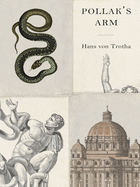
| Publisher: | New Vessel Press | |
| Genre: | Fiction, Historical, Jewish, World War II | |
| ISBN: | 9781954404007 | |
| Pub Date: | February 2022 | |
| Price: | $16.95 |
| Starred | Fiction |
by Hans von Trotha, trans. by Elisabeth Lauffer
At the sight of the Western Wall in Jerusalem, antiquities expert Ludwig Pollak is moved to tears. He explains, "I thought about grandeur, about ascendency and downfall, about historic justice and the wrongs we endure, about the passage of time, old hopes and fulfillment deferred." It is no exaggeration to suggest that Hans von Trotha's Pollak's Arm, translated from the German by Elisabeth Lauffer, will engage similar heights and depths as it reckons with the consequences of power and the conflicting obligations of artists, writers and historians.
It is 1943, and Vatican officials have sent a representative (known only as "K.") to bring Pollak and his family to safety under papal protection after receiving word of the Nazi plan to apprehend all Jews in Rome the following day. K. attempts to convince Pollak to take refuge at the Vatican, but Pollak will not be hurried, insisting that his stories must first be told. K., along with readers, begins to realize that Pollak's reluctance to leave is more complicated and more urgent than expected. Upon his return, K. makes his report to the Monsignor, carefully retelling all of Pollak's stories and granting readers access to Pollak's emotion at the Western Wall, his work with financier J.P. Morgan and his discovery and recognition of the right arm of the sculpture of Laocoön. Pollak's Arm is a deceptive 138 pages, possible to read in one sitting but, once read, impossible to stop thinking about. --Sara Beth West, freelance reviewer and librarian

| Publisher: | Two Dollar Radio | |
| Genre: | Women, World Literature, Humorous, Black Humor, Family Life, General, Literary, Australia, Fiction | |
| ISBN: | 9781953387127 | |
| Pub Date: | February 2022 | |
| Price: | $17.99 |
| Starred | Fiction |
by Ella Baxter
Ella Baxter's debut novel, New Animal, is a raw and irreverent portrait of one young woman's experience of the ways in which sexuality and sorrow overlap. Amelia spends her days alternating between one-night stands on her dating app and working as a funerary makeup artist, activities that--while not detestable to her--leave her feeling lonely and unmoored. And that's before her beloved mother dies suddenly, leaving her bereft and restless beyond containment. Unable to face the funeral with her brother and her well-meaning stepfather, Amelia runs off to stay with her unconventional biological father in Tasmania. There, she begins to experiment in the BDSM community, and finally begins to recognize the depth of her grief.
Baxter's crisp, clean prose offers a surprisingly tender look at mourning from an unusual angle. Baxter accomplishes the surprising feat of discussing often taboo topics like BDSM with sensitivity, respect and complexity. While Baxter never shies away from the darker and uncomfortable elements of both sex and grief, the novel's side characters soften the edges of her story's sharper elements. Both of Amelia's fathers, in particular, give the story its true heart, despite or because of their oddities and imperfections. And while Amelia's burgeoning self-awareness is far from complete by novel's end, readers will have a sense of witnessing quiet revelation. Darkly comedic in its first half and unexpectedly vulnerable in its second, New Animal, like its protagonist, presents a coolly casual exterior only to reveal the fragile truths at its core. --Alice Martin, freelance writer and editor
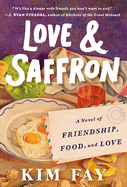
| Publisher: | Putnam | |
| Genre: | Women, Friendship, Epistolary, General, Literary, Fiction, Historical | |
| ISBN: | 9780593419335 | |
| Pub Date: | February 2022 | |
| Price: | $24 |
| Fiction |
by Kim Fay
Kim Fay (The Map of Lost Memories; Communion: A Culinary Journey Through Vietnam) has created an unutterably delightful epistolary novel in Love & Saffron. Set in the early 1960s, when American food was mostly bland and unseasoned, Love & Saffron showcases the unlikely friendship of two women who are indelibly connected by their love for food.
Joan Bergstrom, 27, sends a fan letter and some saffron to magazine columnist Imogen Fortier, 59. Joan, a nascent newspaper food writer, lives in Los Angeles and has fairly adventurous tastebuds for the era. Since Imogen, who lives on an island near Seattle, often mentions clams in her column, Joan suggests that Imogen try mussels flavored with saffron and vermouth. Thus begins a years-long friendship-by-correspondence between the two women, which will see them through the Cuban Missile Crisis, the Kennedy assassination and their own personal triumphs and tragedies.
In this sweet, slender novel, Fay uses vibrant food descriptions to connect her two main characters and to assist them in coping with the dire news of an alarming era. As Imogen and Joan exchange recipes for carne asada and jerk chicken, they also begin to swap stories about their personal lives; and each helps the other's relationships and personal growth. Perfect for those burned out by current news cycles, Love & Saffron is a gentle escape to the past, and also a reminder both that others have survived "unprecedented times," and that deep connections can be made even when people are physically separated. --Jessica Howard, bookseller at Bookmans, Flagstaff, Ariz.
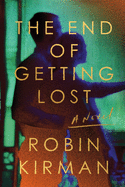
| Publisher: | Simon & Schuster | |
| Genre: | Psychological, Family Life, Literary, Marriage & Divorce, Fiction | |
| ISBN: | 9781982159856 | |
| Pub Date: | February 2022 | |
| Price: | $26.99 |
| Fiction |
by Robin Kirman
A honeymoon away from the madding crowd should provide time for a couple to reaffirm their love and maybe have an adventure or two, even if the trip has been delayed a year. That's the plan for Duncan Lowy and Gina Reinhold in The End of Getting Lost, the intriguing second novel by Robin Kirman (Bradstreet Gate).
Certainly, much love exists between Gina, a professional dancer, and Duncan, a music composer. But inherent in the couple's relationship is obsession, betrayal and more than a few lies. The trip has barely begun when Gina falls at a construction site in Berlin and suffers a head injury. Duncan whisks her to an expensive clinic in Zurich, where she recovers but still has memory lapses several weeks later. She can't recall the accident or her life with Duncan in New York before they left for Europe, though she often feels something is off. The couple, who met while at Yale, moves to various cities, and Duncan's fears intensify as bits of Gina's memory return. Kirman carefully doles out the motives behind Duncan's actions, upping the suspense as his controlling, manipulative nature is revealed. The novel is set in 1996, before cell phones and e-mail were ubiquitous, so Gina can't easily reach out to her father or best friend to find out why they haven't answered her letters.
As their personalities emerge, neither Duncan nor Gina is particularly likable, but Kirman's investment in well-placed twists and several surprising revelations uplifts the couple's story. --Oline H. Cogdill, freelance reviewer
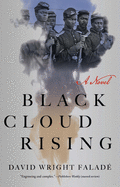
| Publisher: | Grove Press | |
| Genre: | Southern, Thrillers, Fiction, Historical, Civil War Era, Military | |
| ISBN: | 9780802159199 | |
| Pub Date: | February 2022 | |
| Price: | $27 |
| Fiction |
by David Wright Faladé
Black Cloud Rising, David Wright Faladé's immersive first novel for adults (after the YA novel Away Running), is set during the Civil War and told from the conflicted perspective of Sergeant Richard Etheridge as he takes part in a campaign that sends Black soldiers deep into Confederate loyalist territory. The African Brigade is composed in large part of formerly enslaved men, which gives the expedition emotionally charged dimension as the brigade emancipates enslaved people and punishes former slaveowners. In one particularly dramatic scene, General Edward Augustus Wild--a ferocious abolitionist who lost an arm in an earlier battle--directs that a slaveowner be whipped by one of his soldiers before giving a newly emancipated woman "the chance to settle old scores." It's a rousing declaration of purpose for the African Brigade, though Etheridge's response is uneasy as he imagines his father, who once owned him, being whipped by his mother.
As the campaign progresses and the violence intensifies, Etheridge struggles to separate his feelings about their mission from his feelings toward his father, his half-sister and his cousin. He learns that the latter, a childhood playmate, has joined a band of Confederate guerillas. This deeply researched work of historical fiction devotes much more time to the campaign's wearying tasks of marching and provisioning than the brief but ferocious outbreaks of fighting. Just as central to the novel are the battles taking place in Etheridge's heart, as he must learn to stop searching for belonging among people incapable of seeing him as fully human. --Hank Stephenson, manuscript reader, the Sun magazine
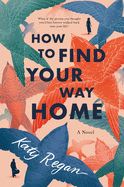
| Publisher: | Berkley | |
| Genre: | Women, Family Life, General, Coming of Age, Fiction | |
| ISBN: | 9780451490377 | |
| Pub Date: | February 2022 | |
| Price: | $17 |
| Fiction |
by Katy Regan
The snags, sorrows, secrets and estrangements of familial connections are ripe themes explored in the fiction of British author Katy Regan. In How to Find Your Way Home, she astutely--and with great empathy for her characters and their predicaments--plumbs the depths of one family torn apart by a simple moment in time that upends lives and fates.
This deeply moving story of siblings Stephen and Emily Nelson is set on Canvey Island in Essex, England. The first scene, set in 1987, lays the literary groundwork: Stephen, as a child, eagerly awaits the happy homecoming of newborn Emily. It is clear that brother and sister are bonded from the start, and sensitive Stephen will spend his life looking out for and remaining extremely protective of his baby sister.
The tender innocence of this opening chapter is shattered when Regan pushes the timeline forward to 2018: Stephen and Emily are now adults in their 30s and have been estranged for 15 years. Revealing the separation--filling in the gaps that uprooted and unsettled both of their lives--becomes the focus of the story.
Regan is a meticulous, graceful writer whose insight on the human condition makes for a completely absorbing story. As in her other novels (Little Big Love), she presents a full, well-balanced picture--tragic, yet buoyed by hope--of the far-reaching influences of family dysfunction. Love, sacrifice and loyalty along with chilling betrayals and rejections are strong undercurrents that ultimately shape and mold blood ties and destinies forever. --Kathleen Gerard, blogger at Reading Between the Lines
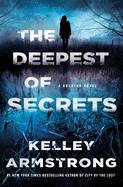
| Publisher: | Minotaur | |
| Genre: | Police Procedural, Mystery & Detective, Fiction, Women Sleuths | |
| ISBN: | 9781250781734 | |
| Pub Date: | February 2022 | |
| Price: | $27.99 |
| Mystery & Thriller |
by Kelley Armstrong
All the residents in Rockton, an off-the-grid town in the Yukon wilderness, respect that everyone there has secrets. In fact, the town was created for people who need to hide out--no one arrived without having been involved in something at least unsavory and, at worst, murderous. But at the start of the absorbing The Deepest of Secrets by Kelley Armstrong, Rockton's deputy sheriff, Will Anders, is publicly but anonymously outed as having committed a brutal killing. The town erupts with discontent, divided between people who demand Will's immediate removal and those who defend his exemplary record in Rockton.
Detective Casey Duncan begins by looking for the person who made the accusation--revealing others' secrets violates a town rule--but she ends up finding the primary suspect nearly dead from an attack in the surrounding woods. And then there's an actual murder. On top of all this, Casey and her boyfriend, Sheriff Eric Dalton, are bracing themselves for the possibility of Rockton being shut down by the powers-that-be who financed and built it. Where would everyone go? How would their secrets remain hidden?
Though Deepest of Secrets is number seven in the series that launched with City of the Lost, readers who haven't read the previous books can enter Armstrong's world without confusion, thanks to the helpful introduction. Before chapter one, all the important information about Rockton and its central residents is provided. The characters, even the cantankerous ones, have grown into a fascinating community over the course of the series. Their fates are left somewhat uncertain, but the ending remains satisfying--and even keeps the door open to new adventures for Casey and her friends. --Elyse Dinh-McCrillis, reviewer and freelance editor at The Edit Ninja
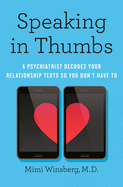
| Publisher: | Doubleday | |
| Genre: | Family & Relationships, Love & Romance, Self-Help, Couples & Family, Psychology, Psychotherapy, Emotions | |
| ISBN: | 9780385546966 | |
| Pub Date: | February 2022 | |
| Price: | $27 |
| Psychology & Self-Help |
by Mimi Winsberg
Dr. Mimi Winsberg, a Stanford-trained psychiatrist and founder of the behavioral health company Brightside Health, takes a fascinating, research-based look at the often-vague language of love: texting. In her first book, Speaking in Thumbs, she walks readers through the decoding of messages from would-be lovers as well as current partners.
"In true Darwinian progression," Winsberg writes, "we evolved opposable thumbs first to swing from trees, then to hold tools. Now to flirt." But texting struggles to convey subtleties, such as tone. Winsberg finds that her clients frequently share their messaging app screens, filled with mixed signals, in the fervent hopes she can decode the subtext. Using research from top institutions, including Cornell University and John Gottman's Love Lab, Winsberg gives readers insight into dating app algorithms, tips on spotting and avoiding narcissists and a deep dive into making the most of the medium in an ongoing relationship.
Winsberg's guide provides practical advice as well as a dose of light, guilt-free voyeurism. Alternating between subject analysis and samples of real text conversations, including her own, the author clarifies connections between technology and communication. While aimed at anyone trying to improve their digit-driven romance skills, the book also gives ample opportunities to play spot-the-liar or judge the would-be beau who uses the phrase "poignant and precious week." However, it's clear that Winsberg aims to create an educational experience, and her passion for the topic and broad collection of sources will give readers enlightenment about the impact of technology on who and how we love, regardless of relationship status. --Jaclyn Fulwood, blogger at Infinite Reads
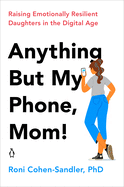
| Publisher: | Penguin Life | |
| Genre: | Family & Relationships, Life Stages, Parenting, Developmental, Psychology, Adolescent, Teenagers, Motherhood | |
| ISBN: | 9780143135418 | |
| Pub Date: | February 2022 | |
| Price: | $18 |
| Parenting & Family |
by Roni Cohen-Sandler
Teenagers today are coping with unprecedented social issues. As a parent, it can feel impossible to know how to handle the situations teens face, because they're so different from the challenges of earlier generations. Psychologist Roni Cohen-Sandler (Stress Sucks!; Friends and Life) has written a helpful, practical guide to assist mothers in creating strong mother-daughter bonds in the digital era.
Internet bullying, sexual misconduct and the #MeToo movement, social media addiction, eating disorders, fear of school shootings, anxiety caused by the Covid-19 pandemic, FOMO (fear of missing out) caused by seeing friends attend events to which they weren't invited--these are among the many situations teens are facing. As a result, many struggle with mental health. Cohen-Sandler explains how vital it is to parent with intention, and teach teens to be emotionally resilient in order to "launch" successfully into adulthood.
Through hundreds of sample conversations from mothers and daughters Cohen-Sandler has seen in her psychology practice, Anything but My Phone, Mom! makes it reassuringly clear that many mothers experience the same dilemmas and that most daughters, despite their avid defense of their devices, actually need less screen time and more time with Mom. Cohen-Sandler does not limit herself to phones and texting; she also explores how to help daughters handle a variety of complicated issues, including coming out, dating, school drama and the pressure of college applications. Parents of teens and tweens are sure to refer back to Anything but My Phone, Mom! with great frequency as they grapple with these challenging years. --Jessica Howard, bookseller at Bookmans, Flagstaff, Ariz.
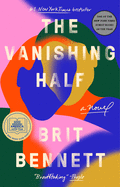
| Publisher: | Riverhead | |
| Genre: | Women, Coming of Age, Literary, Fiction | |
| ISBN: | 9780525536963 | |
| Pub Date: | February 2022 | |
| Price: | $18 |
| Now in Paperback |
by Brit Bennett
Like The Mothers, Brit Bennett's second novel, The Vanishing Half--named a Best Book of 2020 by the New York Times, Washington Post, NPR, People, Time magazine, Vanity Fair and Glamour--is emotional and compelling, with evocative prose and deep characterization.
Spanning 30 years and two generations, The Vanishing Half follows twin sisters Desiree and Stella as they run away from home in the 1950s and follow dramatically different paths in life. Their hometown of Mallard, La., is intentionally populated exclusively by light-skinned black people, and Stella disappears from Desiree's life when she decides to cross over, passing as white and starting a white family.
The story begins in 1968, when Desiree and her very dark-skinned daughter, Jude, come back to Mallard, fleeing years of escalating domestic violence. Returning to the town where her father was brutally murdered by white men is the last thing Desiree ever expected to do after so many years away, but she still feels the pull of home and the cold comfort of the mother and community who raised her. Meanwhile, Stella is living as a wealthy white woman, avoiding all Black people, as she's convinced they'll be able to discern her secret. She goes so far as to teach her blonde daughter that she shouldn't play with their new Black neighbors' child.
While shifting points of view and alternating timelines can become confusing, Bennett skillfully carries readers through three decades and seven narrators. The Vanishing Half handles subjects such as post-traumatic stress disorder, domestic violence, grief and colorism, exploring them within the context of complicated and messy family and romantic relationships. Bennett exposes the myriad ways people can hurt those they love best--or heal generational trauma. --Suzanne Krohn, editor, Love in Panels
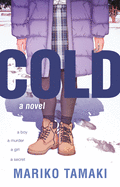
| Publisher: | Roaring Brook Press | |
| Genre: | Bullying, Mysteries & Detective Stories, Social Themes, Young Adult Fiction, LGBTQ+ | |
| ISBN: | 9781626722736 | |
| Pub Date: | February 2022 | |
| Price: | $18.99 |
| Starred | Children's & Young Adult |
by Mariko Tamaki
The murder of a queer teen boy causes a queer girl to question whom she trusts in this stunning small-town YA mystery from Eisner Award and Printz Honor recipient Mariko Tamaki (Laura Dean Keeps Breaking Up with Me; This One Summer).
As a ghost, 17-year-old Todd Mayer "[takes] up no space," much as he did while alive. His "practiced exterior of not caring about anything" only ever cracked for "the boy with the mop of hair and the luggish smile." But as he recalls his death, Todd reveals that "he died without ever kissing anyone he loved." Mr. McVeeter, a gay teacher, was the only person he could confide in--and thus becomes a prime suspect in Todd's murder.
Sixteen-year-old Georgia Walker met Todd only once: when he stood on her doorstep, asking for her brother Mark. But Mark won't talk about Todd or the mysterious bag of money in his room. Georgia feels "super dense," like she isn't asking the right questions: "there's always some whole other layer of f***ed up you don't even know to ask questions about because you don't even know it’s there."
Tamaki's authentic characters demonstrate the anxiety of vulnerability, the desire to feel needed and the horrible mistakes good people can make to look cool. The two myopic detectives' indifferent investigation underscores how misunderstood Todd--bullied and silenced for being gay--became. Todd's darkly poetic observations set a chilling atmosphere (such as watching his body moved "like a piece of luggage") while a sapphic love story brightens Georgia's narrations ("We're sitting right next to each other. And my heart is beating so hard I can feel it in my eyeballs."). A lush, haunting and gripping read. --Samantha Zaboski, freelance editor and reviewer
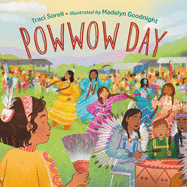
| Publisher: | Charlesbridge | |
| Genre: | United States - Native American, Emotions & Feelings, People & Places, Holidays & Celebrations, Other, Non-Religious, Social Themes, Juvenile Fiction | |
| ISBN: | 9781580899482 | |
| Pub Date: | February 2022 | |
| Price: | $16.99 |
| Children's & Young Adult |
by Traci Sorell, illust. by Madelyn Goodnight
In the lyrical Powwow Day, readers are welcomed into an uplifting "celebration of dance, song, culture, and community."
River wakes on powwow day full of excitement--until she remembers that, because she's been ill, there will be no dancing and no jingle dress competition for her today. Still, she hopes at least to join in for Grand Entry at the start of the ceremony. She waits with the other girls as warriors enter the arena carrying flags, followed by elders heading up the long line of dancers. But her own feet are still. It seems that River is the only one who "can't feel the drum's heartbeat." The competitions begin and "fancy dancers twirl and ribbons whirl." Finally, River feels the drum beat inside her. She watches as her sister, cousin and friends step and turn with feathery fans; she sits tall as they "dance for the Creator, the ancestors, their families, and everyone's health... including mine."
Traci Sorrell (At the Mountain's Base; We Are Still Here), member of the Cherokee Nation, enhances her graceful text with back matter about powwows. Through River, the author neatly conveys the magic and allure of the dances themselves, along with the all-important sense of community and healing fostered by the celebratory event. Madelyn Goodnight (illustrator of Look Grandma! Ni, Elisi!), member of the Chickasaw Nation, uses dynamic layouts and a variety of viewpoints in her colorful digital illustrations to portray the vibrancy of the powwow. Readers will likely find it easy to empathize with River's sorrow as well as her hope for strength, for healing and to dance again. --Lynn Becker, reviewer, blogger and children's book author
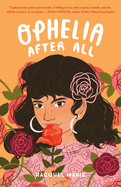
| Publisher: | Feiwel & Friends | |
| Genre: | Romance, Contemporary, Own Voices, Young Adult Fiction, LGBTQ+ | |
| ISBN: | 9781250797308 | |
| Pub Date: | February 2022 | |
| Price: | $17.99 |
| Children's & Young Adult |
by Racquel Marie
In Ophelia After All, debut author Racquel Marie serves up a humorous and compelling slice of high-school life that's lovingly populated by characters with varied sexual orientations and racial and ethnic backgrounds, all intent on finding their way through a year of tumultuous romantic ups and downs.
Senior prom is quickly approaching, and Ophelia Rojas is indulging in many a "swoonworthy" fantasy involving the perfect date. She's known for "drooling" over cute guys, and her friends and family assume that she's always on the alert for new crush-worthy male specimens to romanticize. Sometimes, though, when Ophelia lets her mind wander, "someone stands out against the collection of boys": Talia Sanchez, a classmate she knows "once kissed a girl and liked it." But Ophelia worries that admitting she may be questioning her sexuality goes against everything everybody knows about her, including her Cuban American father and white mother with whom she has always happily shared her emotions. In anger and frustration over her inability to share her newfound feelings, she alienates almost everyone she cares about. How can Ophelia be sure her loved ones will like this new version of her?
Marie's story of questioning and coming out in high school is a multilayered look at high school romance and the benefits, as well as the confining aspects, of long-held group friendships. Her fully realized characters believably love, fight, banter and support one another during this momentous last year of high school. Ophelia is the ultimate romantic, and the story paints a compelling picture of a young woman coming to terms with what exactly that word means for her. --Lynn Becker, reviewer, blogger, and children's book author